Antique and Vintage Tiffany Jewellery
- Tiffany & Co history starts in New York in 1837 with founders Charles Lewis Tiffany and John B. Young.
- The iconic Tiffany Blue, officially known as "1837 Blue," is synonymous with luxury and elegance. Much of our 2nd hand Tiffany jewellery is accompanied by it's original Tiffany Blue Packaging.
- Tiffany introduced the modern engagement ring as we know it today, with its classic six-prong "Tiffany setting."
- The company played a significant role in standardising Jewellery quality and the use of platinum in the United States.
- The famous Tiffany Diamond, one of the world's largest yellow diamonds, weighs 128.54 carats and is rarely worn.
- The New York City flagship store on Fifth Avenue is renowned for its opulent exterior and the movie "Breakfast at Tiffany's."
- Tiffany is one of the most well known jewellery brands with every woman dreaming of the day they get Tiffany jewellery. Which do you prefer - Tiffany or Cartier or Van Cleef?
- Elsa Peretti, a renowned Jewellery designer, collaborated with Tiffany to create iconic pieces like the "Bean" pendant and the "Open Heart" design. We regularly feature Elsa Peretti designs amongst our used Tiffany rings and used Tiffany bracelets.
- The "Return to Tiffany" collection features heart-shaped pendants and charms, symbolising a return to the brand's legacy.
- Jean Schlumberger's designs, like the "Bird on a Rock" brooch, celebrate nature's beauty and are coveted by collectors.
- Tiffany has a legacy of designing trophies, including the Vince Lombardi Trophy for the Super Bowl and the U.S. Open Tennis Championship Trophy.
- The company's sterling silver "Atlas" collection features Roman numerals, reflecting Tiffany's connection to New York City's cultural heritage.
- Tiffany has been a leader in ethical sourcing and established the Tiffany Diamond Source Initiative to trace the journey of its diamonds.
- The "Tiffany T" collection showcases modern, geometric designs that have become a favourite among contemporary Jewellery enthusiasts. We often have "T" design pre owned Tiffany necklaces and preowned Tiffnay rings for sale.
- The Tiffany "Blue Book" collection is launched each year, featuring extraordinary high Jewellery pieces with exceptional gemstones.
- Tiffany has expanded its offerings to include luxury watches, home accessories, fragrances, and leather goods.
- The Tiffany Foundation supports art and design education and awards grants to emerging artists and craftsmen.
- The "Soleste" collection features rings and jewellery with a halo of diamonds surrounding vibrant centre stones. This style is a bestseller from our pre owned Tiffany earrings selection.
- The Tiffany Setting has been celebrated as the most brilliant and iconic diamond engagement ring in the world. Our used Tiffany engagement rings retain all the same sparkle and allure.
- Tiffany's craftsmanship and innovation have made it a symbol of timeless luxury and style, cherished by generations.
Tiffany & Co. Guides
Tiffany & Co Engagement Ring Buying Guide
Every girl's dream is to say “I have a Tiffany engagement ring!" Discover everything you need to know about a Tiffany and Co engagement ring.
Breakfast with Tiffany & Co. - A Tiffany Guide
Originally named 'Tiffany, Young & Ellis', the company quickly gained recognition for its exceptional craftsmanship and exquisite designs.

















































